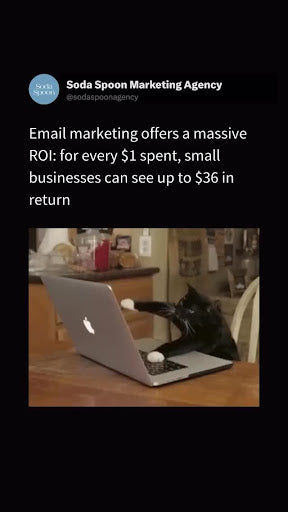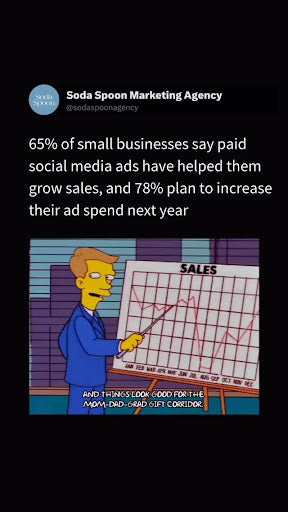Key takeaways
- Get your team on the same page by defining your mission statement, audience, and objectives
- Perform a SWOT analysis to understand where you stand in your market and what opportunities lie ahead
- Set a budget to prevent overspending as you execute your strategies and tactics
With an effective marketing strategy in place, you can achieve your business goals faster than you expect. But marketing teams aren’t pulling their strategies out of thin air. Great marketing campaigns are the result of prior planning. With this marketing plan example, as well as tips for filling it out, you can make the most of your marketing efforts and build a strong customer base.
1. Executive summary
Marketing plans, like business plans, start with an executive summary. This is a short overview that outlines some key takeaways from your completed plan. Write this last, after you’ve completed the rest of your plan, to ensure you’re hitting the most important points.
Keeping this section brief is essential. For marketing plans, executive summaries are ideally no more than three paragraphs and never more than a page. When members of your marketing team look at this first section, they should be able to get the gist of what’s to come in the document.
2. Mission statement
Marketing plays a big role in defining your small business branding. To ensure your marketing team is on the same page with how you want your brand to be perceived, it’s crucial to include this key element of your branding: your mission statement.
A mission statement is a brief phrase or sentence that defines what you uniquely do for your customers. For example, if you’re writing a real estate marketing plan, your mission statement could be:
- To help families find their dream homes
- To make homeownership accessible to people of all backgrounds
- To help buyers and sellers navigate the real estate market
3. Marketing objectives

To make your marketing plan template actionable, include a section for your marketing objectives, which are well-defined marketing goals. Instead of listing out broad goals, you’ll want to get into the specifics. Each objective should be highly measurable and with a deadline. For example:
Too broad: “Achieve a higher email click-through rate”
More specific: “Increase our average email click-through rate by 20% by the end of the first quarter”
Too broad: “Increase conversion rates”
More specific: “Increase conversion rates from all marketing activities by 50% by the end of the year”
4. SWOT analysis
Understanding your position in your market is key for selecting strategies that set you apart. Marketers commonly use SWOT analyses to get a strong sense of where they stand.
“SWOT” is an acronym that stands for strengths, weaknesses, opportunities, and threats. Great marketing plan examples usually include robust summaries of each of these four elements based on thorough research.
Here are some questions you can ask yourself to complete each section.
Strengths
- What is our unique selling proposition?
- What makes our business stand out from competitors?
- What does our company do best?
- Why do our customers love us?
- What resources or connections do we have exclusive access to?
Weaknesses
- What do our competitors do better than us?
- What does our company struggle with?
- What causes our customers to leave?
- What resources or connections do we not have access to?
Opportunities
- What are none of our competitors offering that we can?
- How can we improve upon our competitors’ weaknesses?
- What niche or underserved market can we start to target?
- What resources can we easily gain access to?
- How might marketing trends or industry trends help us?
Threats
- What companies could cause our market share to decrease?
- Are we actively preventing reputational pitfalls (cyberattacks, poor customer service, etc.)?
- Do we have a strategy in place in case of marketing emergencies?
- Are we at risk for losing any key resources (marketing employees, budget, etc.)?
- How might marketing trends or industry trends hurt us?
5. Target audience

Once you’ve analyzed your company’s position in your industry, you need to define who your target customers are. Realistically, what types of people are most likely to become new customers? You can use the niche markets you identified when you outlined opportunities to guide you in this section.
Creating a few buyer personas can help you get the clearest picture of your potential customers. A buyer persona is a detailed profile that represents a specific segment of your target market. It usually outlines details like:
- Demographics: If relevant, include details like age, gender, income level, education level, marital status, religion, and more
- Interests: Include any hobbies your audience member may have
- Goals: Outline what your buyer wants to achieve
- Pain points: Include anything your buyer is currently struggling with
- Objections: Explain why your potential customer hesitates to buy your products or services
With this section, your marketing team will be able to identify the marketing channels, tactics, messaging, and more that are most likely to reach and resonate with the right people.
6. Marketing strategies and tactics
No marketing plan example is complete without strategies and tactics. This is the actionable part of your plan that acts as a roadmap to your goals.
So what’s the difference between these two terms? Strategies are broad directions that you plan to follow to achieve your goals. For example, if your marketing goal is to increase website traffic by 50% within two months, one of your strategies may be to increase website clicks from your social media marketing channels.
Tactics, on the other hand, are the day-to-day actions you’ll take to bring those strategies to life. They’re specific tasks that your team members can own. Think of tactics like a to-do list. Here are some examples of marketing tactics:
- Host giveaways at local trade shows
- Create videos to include in email marketing campaigns
- Connect with business owners who can help promote your new product on LinkedIn
7. Marketing budget
It’s easy to overspend when you’re trying to achieve your objectives. To avoid this, your plan should include a clear marketing budget that breaks down your expected costs. If you plan to spend money on digital advertising, define how much will go to social media ads, search engine ads, Yelp Ads, and/or influencers.
Even if you’re only planning to use free marketing tactics, make sure to consider the cost of content production and execution. For example, your social media strategy still may require the help of freelance video creators or marketing tools like Photoshop.
Err on the side of overestimation. It’s better to make room for unexpected costs than to be surprised by them in the future.
Strategize better with this marketing plan example
Completing this marketing plan example step-by-step will help you build a strong, measurable strategy for your business. Your marketing team will have a clear picture of who you’re targeting, how your brand should be perceived, and where the business currently stands in the market.
By the time you finish your plan, you’ll have a number of tactics that you can turn into action steps for each of your team members. Plus, you’ll have a marketing budget to realistically guide your ad spend.
If you’re on a tight marketing budget, consider these free online advertising opportunities to promote your business.




